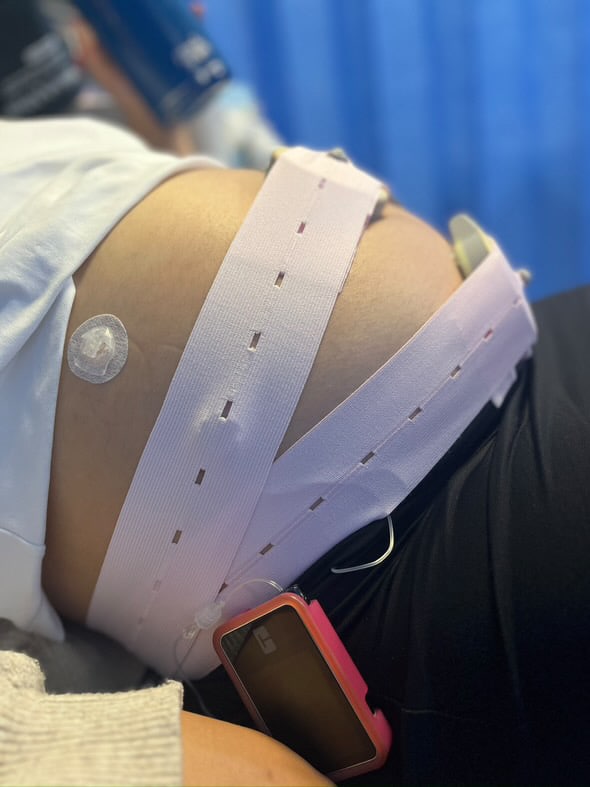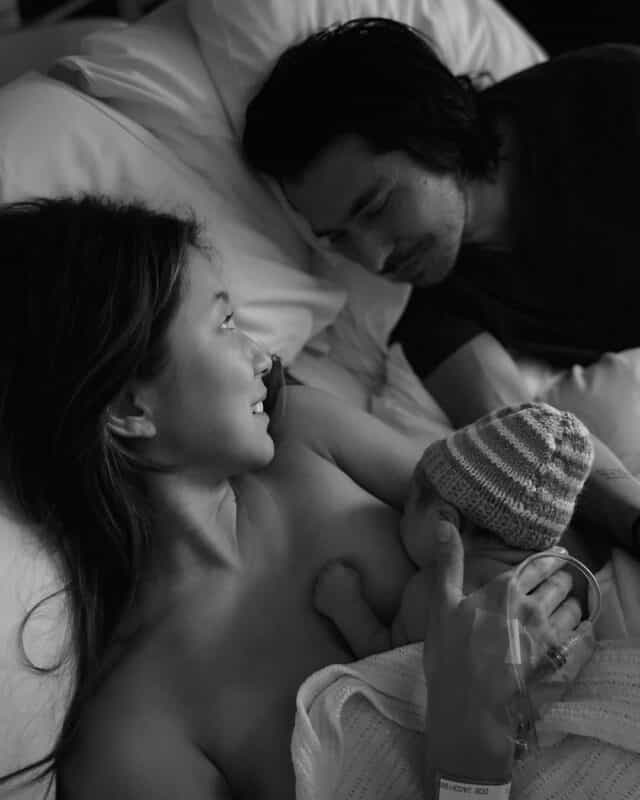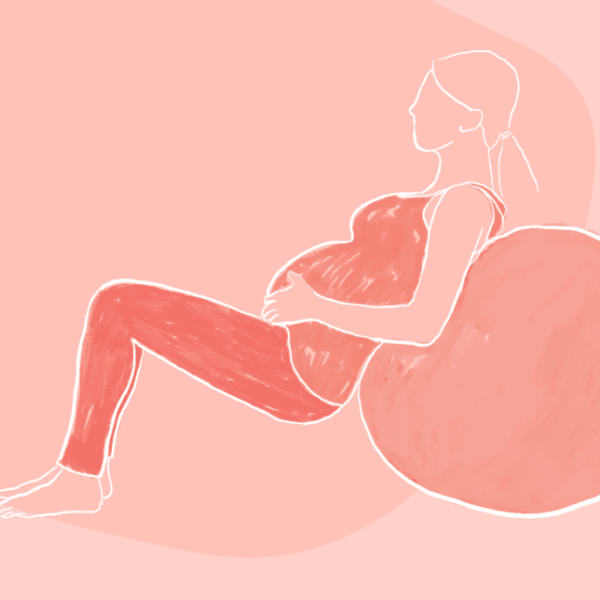Pregnancy Gestational Diabetes (GD)
Gestational Diabetes (GD)

If you are preparing for your glucose tolerance test between 24 to 28 weeks (or earlier if you have a history of insulin resistance), you may be wondering what gestational diabetes is and how it affects your pregnancy.
- Gestational Diabetes is a type of diabetes that only occurs in pregnancy and affects one in six Australian women.
- If you’re diagnosed with Gestational Diabetes, you will be required to monitor your blood sugar levels, make dietary changes and possibly take insulin.
- In some hospitals your pregnancy may be deemed high risk which may affect your model of care
What is Gestational Diabetes?
The rapid changes of pregnancy combined with pregnancy hormones can make you more susceptible to insulin resistance, which means your blood glucose levels may not be well regulated. In a normal pregnancy, your body will make two to three times more insulin. However, if you already have insulin resistance, your body may not be able to cope with this extra need for insulin. When this happens, it can lead to gestational diabetes.
Who is at risk?
Gestational diabetes affects some women with no known risk factors but you are considered at a higher risk of developing it if you:
- have had GD in a previous pregnancy
- are 40 years or older
- have a family history of type 2 diabetes or a first-degree relative (mother or sister) who had GD
- have previously elevated blood glucose levels
- are a First Nations woman
- are from African, Melanesian, Polynesian, South Asian, Chinese, Southeast Asian, Middle Eastern, Hispanic or South American background
- have polycystic ovary syndrome (PCOS)
- have previously birthed a large baby (over 4.5kg)
- are currently taking some types of antipsychotic or steroid medication
If you tick any of these boxes you can expect your care provider to suggest earlier testing. Other symptoms include fatigue and increased thirst and urination.
What does the Glucose Tolerance Test (GTT) involve?
Screening for gestational diabetes is recommended for all pregnancies. The glucose tolerance test (GTT) is scheduled between 24 and 28 weeks and requires overnight fasting (you’ll be allowed to drink water) followed by three blood tests:
- one before you consume a glucose-rich drink
- one an hour after drinking
- one an hour after that
Blood results will reveal your body’s response to a set sugar load.
I’ve been diagnosed with Gestational Diabetes – now what?
If you have been diagnosed with GD, chances are you’re feeling really overwhelmed with the extra responsibility of monitoring your blood sugars and adjusting your diet. A diagnosis may also make you feel disappointed in your body, concerned for your baby and worried about what this means for the remainder of your pregnancy and your labour and birth. All these feelings are valid and very, very normal.
It’s expected that you’ll feel unable to take in a lot of new information at once, hence your care provider will likely refer you to a diabetes nurse or clinic who will support you for the remainder of your pregnancy and take you step by step through the changes you need to make to ensure your diabetes stays under control. Overall this means your diet will need to be very consistent for the remainder of your pregnancy and will require you to significantly limit your overall carbohydrate intake to maintain control of your blood glucose.
You will be required to:
- regularly monitor your blood sugar levels at home
- plan a strict diet that includes a balance of protein, fat + high-fibre carbohydrates
- stay well hydrated (no sugary drinks)
- embrace regular exercise that raises your heart rate and is also safe for pregnancy and your fitness level
If you are struggling to manage your blood glucose levels with diet and exercise alone, you can expect your diabetes clinician to refer you to an endocrinologist who will prescribe you medicine to lower your sugar levels. Both insulin injections and metformin pills are both considered safe to take during pregnancy.
How to Monitor Your Blood Glucose
Once you’re diagnosed with gestational diabetes, you will be required to test your blood sugar levels several times a day. Your diabetes nurse will likely advise you to do this as soon as you wake each morning and then one to two hours after every meal.
You will be given a blood glucose metre (also known as a glucometer) and provided with a target range for your glucose levels. In Australia, the target blood glucose levels are commonly set at:
- 5.0mmol/L or less before breakfast
- 7.4mmol/L or less, if you test one hour after starting your meal
- 6.7mmol/L or less, if you test 2 hours after starting your meal
After Birth
Gestational diabetes doesn’t dictate how you birth your baby but it does require extra monitoring after your baby is born. This involves:
- special monitoring for the first 24-48 hours after birth. Your midwife will check your baby’s blood glucose with a heel-prick blood test two to four hours after birth
- feeding your baby as soon as possible after birth (ideally within 30 minutes) and regularly afterwards (at least every three hours) during the first 24 hours. This helps keep your baby’s blood glucose at a safe level.
- many women express colostrum in the late stages of pregnancy and it’s particularly helpful if you have GD so mild to moderate low blood glucose levels can be treated. For a guide to antenatal expressing, see The Birth Class.
- if your baby’s blood glucose can’t be kept at a safe level, they may need extra feeds (expressed colostrum, expressed breastmilk, formula or glucose). In some cases, your baby may be given a drip to increase their blood glucose which will mean your baby spends time in the special care nursery.
If you were taking insulin during pregnancy, you will be advised to stop taking it immediately after your baby is born. You’ll be given a blood test in hospital and again at your six week postnatal check and you can expect your blood sugar levels to return to normal within a few weeks. Gestational diabetes does increase the risk of developing type 2 diabetes later in life for you and your baby but we do know that breastfeeding decreases this risk for your baby. Your GP will recommend annual or bi-annual blood tests for type 2 diabetes and will remind you of the most common symptoms – fatigue and excessive thirst.
Categories
Related Products
-
The Birth Class
108 reviews$249.00The empowering online childbirth education program that will help you confidently prepare for birth.
Get your copy of our Perineal Massage Guide in your inbox
Keep Reading
We think you might enjoy these articles

Pre-existing Diabetes and Pregnancy: What You Need to Know

Harnessing the Power of Acupressure: A Natural Approach to Preparing for Birth

Thoughtful Christmas Gifts for your Pregnant Friend.

What is Pre-eclampsia?

Non-invasive Prenatal Testing (NIPT)
@AustralianBirthStories
Follow along with us
@AustralianBirthStories
Follow along with us
@AustralianBirthStories
Follow along with us
@AustralianBirthStories
Follow along with us
@AustralianBirthStories
Follow along with us
@AustralianBirthStories
Follow along with us
@AustralianBirthStories
Follow along with us
@AustralianBirthStories
Follow along with us
@AustralianBirthStories
Follow along with us
@AustralianBirthStories
Follow along with us
@AustralianBirthStories
Follow along with us
@AustralianBirthStories
Follow along with us





